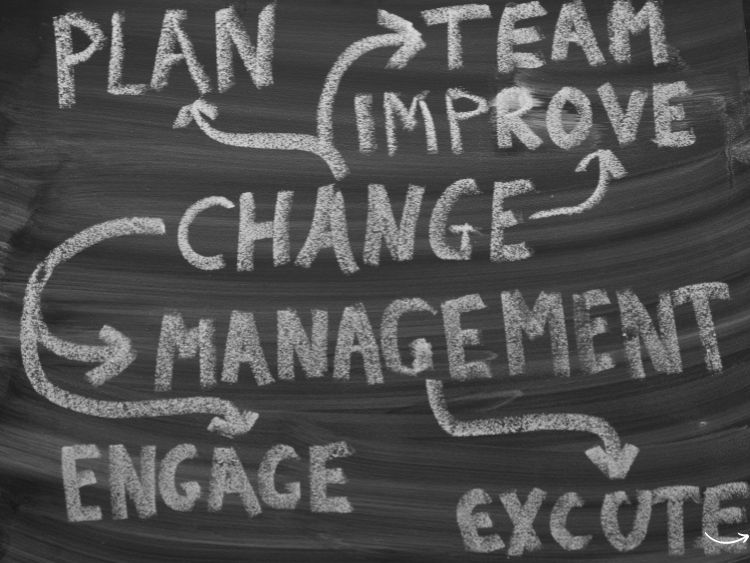Ever heard the saying, “The only constant in life is change”? Well, it couldn’t be truer in today’s fast-paced business world. Change management is crucial for organizations aiming to stay competitive and adapt to evolving market demands. But what exactly is change management, and why is it so important? Buckle up, because we’re about to dive deep into the significance of change management and how it can make or break a business.
What is Change Management?
Change management refers to the structured approach an organization takes to transition from its current state to a desired future state. This process involves planning, implementing, and monitoring changes to ensure they are effective and sustainable. Change management encompasses everything from adopting new technologies to restructuring company operations and even shifting corporate culture.
Why is Change Management Important?
In today’s rapidly changing business environment, companies must be agile and responsive to survive. Change management helps organizations:
- Minimize Disruption: Change can be unsettling, causing disruptions in workflows and productivity. Effective change management ensures a smoother transition, minimizing these disruptions.
- Increase Engagement: Engaging employees in the change process increases their buy-in and reduces resistance. When employees feel involved, they are more likely to support and champion the change.
- Improve Outcomes: Properly managed change leads to better outcomes, ensuring that the objectives of the change initiative are met.
- Sustainability: Change management helps embed new practices and behaviors into the organization, ensuring the change is sustained over time.
The Change Management Process
Change management isn’t a one-size-fits-all approach. It involves several stages, each critical to the overall success of the change initiative. Let’s break down the process into manageable steps.
1. Preparing for Change
Preparation is key. This stage involves understanding the need for change, defining the scope and objectives, and assessing the organization’s readiness. Key activities include:
- Conducting a Needs Assessment: Identify why the change is necessary and what it aims to achieve.
- Stakeholder Analysis: Determine who will be affected by the change and how they can influence its success.
- Communication Plan: Develop a plan to communicate the change to all stakeholders, ensuring transparency and clarity.
2. Planning the Change
Planning involves developing a detailed roadmap to guide the change process. This includes:
- Setting Objectives: Clearly define what the change aims to accomplish.
- Resource Allocation: Identify the resources needed, including budget, personnel, and technology.
- Risk Management: Anticipate potential challenges and develop strategies to mitigate them.
3. Implementing the Change
This is where the rubber meets the road. Implementation involves putting the change plan into action. Key steps include:
- Training and Support: Provide employees with the necessary training and resources to adapt to the change.
- Executing the Plan: Follow the roadmap, making adjustments as needed to stay on track.
- Monitoring Progress: Regularly assess progress and make necessary adjustments to ensure the change stays on course.
4. Reinforcing the Change
Reinforcement is about ensuring the change sticks. This involves:
- Feedback Loops: Collect feedback from stakeholders to identify areas for improvement.
- Recognizing Success: Celebrate milestones and successes to maintain momentum and morale.
- Continuous Improvement: Use feedback to make ongoing adjustments and improvements.
The Role of Leadership in Change Management
Leadership plays a pivotal role in change management. Effective leaders inspire confidence, communicate clearly, and provide the support needed to navigate change. Key leadership behaviors include:
- Visionary Thinking: Leaders must articulate a clear vision of the future state and why the change is necessary.
- Empathy: Understanding the emotional impact of change on employees and addressing their concerns.
- Decisiveness: Making timely decisions to keep the change process moving forward.
- Accountability: Holding themselves and others accountable for the success of the change initiative.
Common Challenges in Change Management
Change management is not without its challenges. Here are some common obstacles and how to overcome them:
- Resistance to Change: Employees may resist change due to fear of the unknown or a perceived threat to their job security. Addressing these concerns through transparent communication and involving employees in the process can help mitigate resistance.
- Lack of Leadership Support: Without strong leadership support, change initiatives can falter. Leaders must be visibly committed and actively involved in the change process.
- Poor Communication: Ineffective communication can lead to misunderstandings and confusion. A well-developed communication plan that keeps stakeholders informed and engaged is crucial.
- Insufficient Resources: Change initiatives require adequate resources, including time, money, and personnel. Ensuring these resources are available is critical to success.
Benefits of Effective Change Management
When done right, change management offers numerous benefits to organizations. These include:
- Improved Performance: Effective change management leads to better performance by aligning processes and practices with organizational goals.
- Increased Employee Morale: Involving employees in the change process and addressing their concerns can boost morale and engagement.
- Enhanced Competitive Advantage: Organizations that manage change well are better positioned to adapt to market shifts and stay ahead of the competition.
- Reduced Costs: By minimizing disruptions and improving efficiency, effective change management can lead to cost savings.
FAQs
What is the purpose of change management?
The purpose of change management is to guide organizations through transitions, ensuring changes are implemented smoothly and successfully while minimizing disruptions and maximizing benefits.
How can organizations overcome resistance to change?
Organizations can overcome resistance by involving employees in the change process, communicating transparently, addressing concerns, and providing the necessary training and support.
Why is leadership important in change management?
Leadership is crucial because leaders provide vision, direction, and support, ensuring that the change initiative is effectively communicated and executed.
What are the key steps in the change management process?
The key steps are preparing for change, planning the change, implementing the change, and reinforcing the change.
How does change management benefit an organization?
Change management benefits organizations by improving performance, increasing employee morale, enhancing competitive advantage, and reducing costs.
Summary
In conclusion, the importance of change management cannot be overstated. It’s a vital process that helps organizations navigate the complexities of change, ensuring successful outcomes and long-term sustainability. By understanding the change management process, recognizing the role of leadership, and addressing common challenges, organizations can effectively manage change and thrive in an ever-evolving business landscape.
Authoritative Links
- https://www.prosci.com/resources/articles/change-management-best-practices
- https://www.cio.com/article/243927/change-management-definition-and-solutions.html
- https://hbr.org/2019/06/the-hard-side-of-change-management
This article on the importance of change management provides a comprehensive overview of why change management is essential, the process involved, and the benefits it brings to organizations. By following these guidelines, businesses can navigate change more effectively and achieve their desired outcomes.





